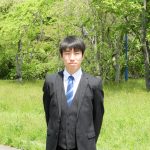Hometown in Japan: Saitama
Home University: Tohoku University, School of Engineering, Mechanical and Aerospace Engineering
B2: Sophomore, Expected Graduation Date: March 2021
Research Host: Prof. Pol Spanos, Depts. of Mechanical & Civil Engineering and Materials Science & NanoEngineering
Why Nakatani RIES?
I have a strong desire to become a globally-engaged engineer, which I would describe as a person who conducts leading-edge research on potentially world-changing technologies and also has the skills which enable him/her to cooperate across cultural and linguistic barriers with people worldwide.
The main reason I decided to apply to the Nakatani-RIES program is to experience first-hand research at one of the world’s leading universities. I believe this can be an important step along the way to reach my objective of becoming a global engineer. In addition, once I complete my degree at Tohoku University, I plan to go on to graduate school abroad. I hope that through this program I can acquire the necessary knowledge for advanced studies in space engineering and learn the skills to cooperate with researchers in the US. The RIES program will give me a chance to experience research at an early stage and help me prepare for studying abroad for a longer-term in the future. This program will also encourage me to interact with all the other participants and I’m convinced I will be highly stimulated on many fronts.
- To experience hands-on research at Rice University.
- To learn the skills needed to conduct research in academic field.
- To interact with students and professors in academic contexts.
Excerpts from Mizuki’s Weekly Reports
- Week 01: Arrival in the U.S.
- Week 02: Life in My Research Lab at Rice
- Week 03: Interview with U.S. Student and Researcher
- Week 04: Reflections on English Language & Life in the U.S.
- Week 05: Final Week at Rice and Research in the U.S. vs. Research in Japan
- Research Project Overview and Poster
- Week 06: Last Week in the U.S.
- Final Report
- Tips for Future Participants
Week 01: Arrival in the U.S.
This is my third time to visit the United States, so I have already know a lot about the customs and society here. To prepare for this visit to the U.S., I kept in mind that it would be hot and humid outdoors in Texas but freezing cold indoors. Sarah and Ogawa-san told us that the weather in Houston is hot and humid in August. On the other hand, it is very cold inside of buildings due to the heavy air conditioning (A/C). At first, I doubted what they said about the inside buildings being really cold. However, they told us this many times and alumni also told that you should bring something to endure this freezing cold. So, I made sure to pack some clothing layers that I could easily put on indoors and take off outdoors. This has worked really well.
This is the first time to visit Houston and to experience living in the South in the U.S. I learned that there are some cultural differences here compared to the East Coast, where I have visited before. What I’ve noticed so far is that people in Houston are friendlier and more talkative than on the East Coast. At first, I was rattled by this openness, however I have gradually grown to understand and appreciate this aspect of life in Houston. This first week at Rice Uniersity we also participated in a lot of seminars and orientation activities including:
- Introduction to Life in the U.S.: During this seminar, I learned about what to bear in mind during my stay such as what type of food to try and how to access hotel facilities. I also learned about the culture in Houston too.
- Introduction to Research in the U.S.: In this seminar, I learned about the lab safety and what I need to do in research internship in Rice. I think most important thing in research is the timeline. Since I have only five weeks, I will need to try to plan carefully in the first week to carry out my project on schedule. Also, I want to keep in mind how my final research project poster will be evaluated to ensure I present my research in a meaningful way.
- Intercultural Communication in the U.S.: This seminar discussed the difference in core value of the Japanese culture and U.S. culture. I had never thought about this before, therefore, this idea was new to me and gave me a new way to consider and understand U.S. culture.
- Campus Tour: This was my first time to explore the whole of Rice University campus. I was so surprised to see the well-designed buildings. The most impressive thing about campus is the beautiful dormitory and the level of satisfaction of students’ living. I hope I can live in such a great environment.
- Tips on Using/Speaking in English: This lecture was about points to keep in mind when using English with English speaking people. I have already learned about the CVC structure before, however, this was a good opportunity to think about it again. Moreover, I have never thought about the way to convey my name to English speaking people before. I want to try this method during stay in the United States.
- Welcome Lunch with Host Labs: This was the first time I met my host professor and mentors in person. Since I had never experienced this kind of networking reception before, I was surprised that the first direct contact was really casual. I introduced myself to my professor and lab members while we stood in line to grab food. I had a good time with my host professor and mentors through casual conversations.
- OISS Check-in and Visa Review: In this session, I completed most of visa requirement. I was moved to know that our program is supported by many peoples’ effort. Without their contributions, I cannot experience there kinds of things. I really appreciate all of the members who contribute to this program.
- Introduction to Designing a Research Poster: Since I have never had the opportunity to learn about or design a research poster before, this seminar was helpful to know the tips for making it.This program will be my first time to present a research poster, so I am very interested in it and looking forward to interacting with many people about my research. I am eager to do fascinating research and present my idea to them.
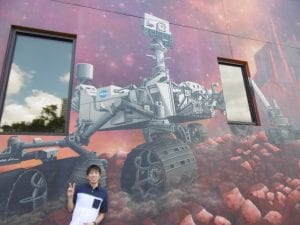
This week we also had some fun evening and weekend excursions to introduce us to life in Houston including:
- Grocery Store Tours: These tours were a little bit busy, since we need to think about and consider what to buy to make for our daily meals. I am looking forward to trying to cook well throughout the stay in here.
- Houston Mural Tour and Houston Food Fest: At first, I did not know what a mural was. When I saw mural at first, I was very impressed. I rarely see this kind of art in Japan. I was most impressed to see the mural of mars explorer. It reminded me that Houston is known as the ‘Space City’. The Houston Food Fest was awesome, I ate many different types of food.
- Cisterns Tour & Buffalo Bayou Bend Park: I was fascinated by the beautiful structure of the reservoir, and its combination of the lights. It was interesting that I can be a part of its art by wearing a lab coat. I was impressed to know that this structure was built in 1926. Also, the park was fun, and I found many Houstonians enjoy their weekend. I hope I can enjoy my weekends like them.
Preparing for Research in the U.S.
Prior to departure, I asked my host professor for advice on what I needed to do to conduct research. He told me to review fundamental mathematics and dynamics and review again what I had already learned in my home university. Fortunately, this worked well. Having a good understanding of the fundamental mechanics of materials is helpful when learning about my research project at Rice University. Therefore, I highly recommend future Nakatani RIES Fellows to review what you have already learned in your home university.
I also asked him whether I will use any kind of programming language or numerical analysis software. He told me that becoming adept with MATLAB will be a long-lasting investment and very useful for my research visit at Rice University as well. Since I have never used MATLAB before, I was a bit worried about this. So, I decided to buy a book about MatLab and bring this with me and it has proven helpful with my project. If you have a possibility of using programing language or analysis tools, you should bring something helpful as well as the assigned papers.
In addition, He also told me that I would use the Monte Carlo Simulation in my research project. I knew the name of it, however, I did not know what exactly it was and how to apply this in engineering context. So, I searched on Google about this and found some introductory articles and lecture videos on this topic. Thanks to this effort, I could work on my project smoothly. So, I recommend future students to learn a bit about the specific tools you will use in your research internship too.
My First Few Days in the Research Lab
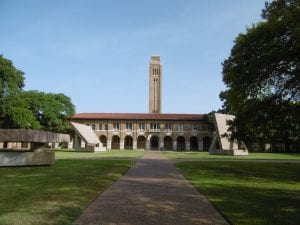
At first, I felt anxious to meet Professor Spanos and my mentors for the first time. When I met them at the Welcome Lunch, I was surprised that they were very cheerful. So, I felt a little bit embarrassed that I had been anxious. They really welcomed me, and I felt happy to work on my research internship with their support.
My professor and mentors did not give me a specific research topic. Instead, I needed to find out something interesting about the Monte Carlo Simulation and propose what I would like to research about this to them by myself. Actually, this was really tough and problematic to me. Since I have never experienced research before, I did not know how to find the question in engineering and seek the way to study about it. I was struggling to know how to do this. So, I asked my mentor to give me examples of the Monte Carlo Simulation and he gave me his past work. This was really helpful because his report showed examples of the applications of Monte Carlo Simulation in mechanics of dynamics. And there was a strong link with my specific interest in space technology and safety assessment as the Monte Carlo Simulation can be applied as a method of calculation of error. Therefore, I decided to study about the simulation of truss structure, which is one of the basic components of International Space Station, considering the slight difference in rigidity from manufacturing error.
Now I’m working on the dynamics of truss structure and numerical analysis program using MATLAB. I almost completed the simulation of plane truss structure. However, this is really simple and I should consider more complex truss structure to study the space station truss. This is really challenging for me because I need to get data about the truss structure of space station and I do not know the way to calculate stress of complex truss. I need to seek the information from reliable sources and learn the way to calculate it. Also, I want to have more chances to discuss my project with my mentors. They kindly give me suggestions for my project and I am sure that I cannot work well without their support. I want to discuss more to make my research project ideas even better in the weeks ahead.
Week 02: Life in My Research Lab at Rice
I described my initial meeting with host professor and mentors in the week1 report, therefore, I would like to talk about the encounter with other lab members. I met three group members on my first day in the lab. All of them were PhD students and their majors are civil engineering and mechanical engineering. It was interesting to me that the lab had such a casual atmosphere. It seems to me that students in different grade can talk, discuss and ask questions about their studies. In Japan, there is hierarchy in different grade like 先輩・後輩. I believe there is no superiority or inferiority in the Japanese hierarchy, however, it is good to have a chance to interact with student from different grades.
My mentors are Hanshu and Ying. Both of them are from China and studying at Rice. Hanshu is majoring in civil engineering and studies signal processing. He kindly reviewed my schema of dynamic analysis of truss. Ying is majoring in mechanical engineering and she gave me advice about the statistical analysis. I really appreciate their help and I want to discuss my project frequently with them to make it even better. Prof. Spanos kindly supported my idea about the project and encouraged me to work on it and answered my questions.

I am mainly working in Hanshu’s office in the Ryon Lab building and I have a desk in his office. Although, it is a little bit dusty, the desk is big and comfortable. Fortunately, the air conditioning is not so cold! The overall culture of my lab is quite loose. There is no core time or weekly meeting and there is not so much interaction other than research. Hanshu often leaves his office for a long time in the afternoon, so I asked Ying about that and I was surprised to know that he takes a nap at his home! I have had some difficulties in describing my idea, calculations and MATLAB code in English. Sometimes, I cannot convey my ideas to my mentors and I became super upset to think about what to do in these conversation. I think this is because I had no prior experience of conveying my ideas of scientific and engineering topics before. I don’t have as much vocabulary in technical terms. Therefore, I need to try hard to be able to communicate in an engineering context.
Outside of research, the most helpful seminar in the second week was the panel discussion with Japanese graduate students at Rice. Through this, I learned some key points to take into consideration if I decide to go on to graduate school in the United States. Through this seminar, I learned more about daily life and research in Rice, which is helpful in thinking from pragmatic a perspective. I was also impressed by the Mr. Motomura’s seminar. I was curious to know about his career that he got a medical license and established medical device company after that and the process of developing medical devices. I felt that he likes to do business. I believe founding a company and doing business is one of the ways to work in any kind of field, including aerospace and I got some insight about that. Also, I was happy to know about the efforts to improve heart device. I am also interested in safety engineering. Therefore, it was meaningful to learn about the FDA Design Control Guidelines too. The session with Dean Matsuda was also good. I was sympathetic about his idea of uncertainty of breakpoint in definition of Engineer and Scientist and this gave me an insight that I should be an engineer who can think about the needs in society.
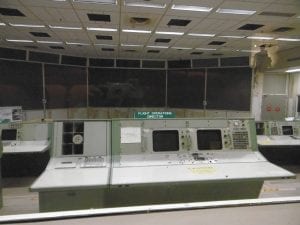
Visiting NASA Johnson Space Center was one of the things I was really looking forward to doing in Houston. I was really motivated by the Apollo’s Mission Control Center. It gave me goosebumps that the actual operation of this iconic scene in aerospace engineering was performed in right here! And the most memorable thing was seeing the memorial tree of casualties for past missions. Although these incidents might be unavoidable in development of engineering, this made me to think about the responsibility of engineers.
In terms of my daily life, I have almost got used to living here and I have already established a routine for each day. I usually cook my meals by myself, but I got tired of eating tomato pasta. I want to eat something else.
Research Project Overview
My research is intended to evaluate the difference in performance of different truss structures which contain an uncertain range of manufacturing error. This study is motivated by my vision for the future of the space industry and safety engineering. I think that participation of private business will be active in the future and it will be important to know the distribution of efforts in engineering as a crucial means to to cutting down costs and enhancing productivity. In the diffusion of technology, I think we should be able to produce through a low effort. Sometimes it needs a lot of effort to lower errors and sometimes this causes the enlargement of cost and time and this can make it difficult to accelerate the popularization of cutting-edge technology. I want to assess the performance of truss made in a low effort (I mean that you do not have to press too much emphasis on slight difference in rigidity) and consider the acceptable options for future aerospace technology.
My research is also motivated by my interest in safety assessment. Every product has an uncertain difference from the manufacturing error and this could influence the performance in the entire system. My research is to determine the truss structure which is the most appropriate in performance considering the uncertain difference in rigidity. This can help engineers to design something that is low cost and improves reliability.
My research method is to use the Monte Carlos Simulation. In order to model the uncertain difference in rigidity, I use a random number in Young’s Modulus and diameter of each elements in truss structure. The range of difference is based on the tolerance of material. And I put a constant concentrate load at the center of upper beam. Then, I calculate the member force and stress. Moreover, I will also calculate the deflection of entire structure using strain energy and Castigliano’s theorem. This procedure is repeated 1000 times and the mean stress and deflection of each trial is displayed in histogram with the distribution fitted by probability density function. This allows us to handle these data statistically and estimate the variance and the probability of a certain range of stress or deflection. I plan to calculate some types of truss structure and see if there is a difference in performance. I am mainly working on the MATLAB code for calculation and statistics. As I mentioned in last week’s report, I learned some MATLAB syntax and programming. Therefore, I have had no difficulty using MATLAB at this point. The problem is the lack of knowledge in statistics. I learned it before, but I need to review this because my current understanding is not enough for my research. Also, I need to find some articles about the material characteristics to consider the standard rigidity and tolerance.
In terms of my timeline, I plan to work on the different truss and finish calculating all of the type of truss sometime from week three to week four, then I will prepare the poster and practice poster presentation in week five. My research is not so time consuming, therefore, I want to make it ready to analyze truss structure and calculate them as soon as possible and see if there are more thing to consider and time to do more research.
Week 03: Interview with a U.S. Student and Researcher
Interview with Hanshu Zhang, Ph.D. Student, Department of Civil Engineering, Spanos Lab
Hanshu is a PhD student in Prof. Spanos’s lab and his research focuses on signal processing. He is also one of my mentors and shares his office with me. He studied in China until graduating from high school, then, he came to the United States and studied at Rensselaer Polytechnic Institute and got his bachelor’s degree there. After that, he came to Rice.
There are two reasons why he come to the United States. The first reason is that Chinese society values student’s international experience. The Chinese economy is growing these days and it has become more competitive. He wanted to get international experience to enhance his value. I believe this situation is the same in Japan too. Secondly, his family encouraged him to study in the United States. According to him, he was not so diligent when he was in China, therefore, his parents wanted him to learn how to live by himself and study hard. He kindly talked to me about his career goals as well. He plans to get PhD degree at Rice and go back to China. He wants to stay in academia because he likes research and the atmosphere of a campus. I like the campus atmosphere too, as I like the scene that students or professors discuss something and make progress in STEM fields together.
His father is a professor in Civil Engineering and he had many chances to become familiar with this field when he was young, as his father took him to his construction sites and he enjoyed it. That’s why he decided to major in Civil Engineering. I felt some sympathy about his motivation for Civil Engineering. My father also majored in Mechanical and Aerospace Engineering and he gave me some chances to learn about this field too. In addition, my grandfather was a carpenter and I used to see his work liked to make something using the leftover materials. Through his example, I learned about the joy of making something.
Hanshu’s idea is to seek a balance of study and personal life and this concept was interesting to me. He has no specific rules or plans for this as he does not like to make specific, concrete plans. So, he said he does something as he likes. However, it seems to me that he does what he should do, and he is is good at balancing his workload and his personal life. He usually works on his project and attends classes in the morning, takes a nap in his home after lunch, and comes back to the office and studies until evening. He studies efficiently and values his personality as well. I think I am not as good at balancing study and personal life. I sometimes tend to get distracted by my hobbies while studying so I want to find a way to better balance them.
Finally, he gave me some advice for young undergraduate students. He encouraged us to try to know new people, things, and places, and have fun. This is what he tries to do in his life. Being open minded to new things will help you learn new things.
Interview with Dr. David Alexander, Director of Rice Space Institute, Professor in Physics and Astronomy
I got a chance to interview Dr. Alexander in Rice Space Institute (RSI). He is the director of the RSI and take great initiative in space research in Rice. I was really happy to meet and make a connection with him.
He is from Scotland and got a PhD in cosmology there. He studied about the solutions for Einstein’s equation and wanted to reveal the evolution of universe within the undergraduate curriculum. He used mathematical knowledge to work on this. However, he switched his main research focus to solar system research because he found that he was in a good group of researches in that field and no one was doing theoretical studies on the universe. I assumed that changing his main research focus would be difficult, however, he said he did not face difficulties because he was good at math and got a lot of support from his friends and professors. I was impressed by his adventurous decision to change his topic.
Also, I asked him about his work at Rice, and he really enjoys the environment in here. Since Rice is a small university, he supervises just a small number of students and this enable him to interact with his students more often. He likes the engagement with students and doing research with them. I really liked his passion for education and I felt a bit envious of students who learn under his instruction.
What was interesting to me was his ideas about working in industry vs academia. I believe these are major forks in career path you can take as an engineer and sometimes I seriously think about which I should choose. What I learned was there is a difference in process of proposals. According to his opinion, it is not so tight in academia. You can get funding easily if your proposal for research is good. On the other hand, industry funding is quite tight, and it could not always be funded according to situation even though the proposal is good. This is because workers are paid, facilities are used to make profit, and your proposal should be related to company’s intention or profit. In most cases, this is just a difference in the system. Therefore, you should understand this and accept this.
His opinion about internationalization in science and engineering made me think about what I might do as an engineer. According to his idea, internationalization in science is quite easy because every research is published and shared all over the world. On the other hand, sometimes internationalization of engineering faces some barriers. Engineering is closely connected with industry, defense, government secrets, and politics. It can be influenced by the economic and political situation. Moreover, the system to secure intellectual assets and intellectual property is different from country to country and this sometimes make it difficult to share it properly. I hope that more knowledge will be shared, but it would be very difficult because many people, not only engineers but also governors, lawyer, people in industry, and many other intellectuals need to work together. Also, you need to create an atmosphere that enables engineers to share their knowledge or work. I am thinking about what I can do, but I have not figure it out yet. I need to think about this in the process of being global engineer.
Also, I learned new things such as the current interest in astronomy and the future collaboration with space engineering through his interview and these topics were motivating to me as well..
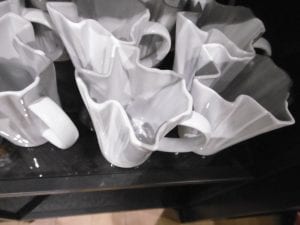
Seminar & Other Activities in Houston
The most impressive experience this week was the lecture with Prof. Akane Sano in the Dept. of Electrical & Computer Engineering at Rice University. I am interested in a career and studying in the United States and then going on to the academia in the United States. After her lecture, I asked about her career and work in U.S. academia and she pointed out that the style of laboratory is different in that labs have several faculty members in Japan, but in the U.S. there is usually just one professor leading the lab. The tenure system is quite tough and young faculty members have to work hard to secure tenure.
Research Project Update
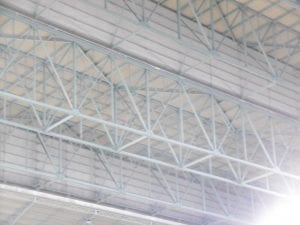
This week, I worked on the different types of truss structures. I assumed that there might be some difference in performance according to the shape and combination of each truss. Therefore, I calculated three types of truss structure, Warren, Plat and Howe truss. Each truss has the same length and the concentrate load is at the center of it. I calculated the member force of each element and change the value of the MATLAB matrix to calculate that. It seems that Howe truss is relatively good in performance in that the mean value of deflection is relatively small, and the variance of deflection is quite small compared to that of other two trusses. This indicates that there might be some types of truss that is more tolerant in performance than that of others. I found it interesting that the combination of each element can influence the performance and there might be tolerant.
However, I am struggling to handle the data statistically. I calculated a probability density function which fits the distribution of deflection. But I am not sure how to use that data effectively and how to interpret the data. Also, my mentor told me to check out the data of deflection considering the distribution of Young’s modulus and diameter which are the valuables related to the rigidity. She recommended to use the probability distribution of those valuables, however, I am not sure what she means and how to do that. I need to talk to her to make sure what I should do.
In addition, I think I need to talk to Prof. Spanos more frequently. I did send him emails about the progress of my project several times, but I assumed we did not have enough time to discuss my project and I did not make the most of the opportunity to work in his lab. I should try to speak up and make appointments with Prof. Spanos and my mentors to make the most of my stay in Rice as well as to enrich my research project.
I am also struggling to think about the way to conclude my research. My research is intended to consider the manufacturing effort vs generalization of the cutting-edge technology and safety assessment. I think this idea is too general and not so obvious because there are many ways to discuss this idea. I mean the picture is so big and there is no memorized sequence that could be used to approach this. This has made it hard for me to find out the way to relate my study and my idea logically and understandably. My resource is the mean value and variance of the deflection of truss. I need to find out the way to relate this to my idea.
I began to work on the poster as well. I have already made the outline of poster and thought of the layout of each section. The lecture about how to make the poster by Dr. Moran in week 1 was really helpful for this work. I need to summarize what I want to say to make poster. I think there should not be too much information on poster and I should keep this in mind to make comprehensible and well-designed poster.
Week 04: Reflections on English Language & Life in the U.S.
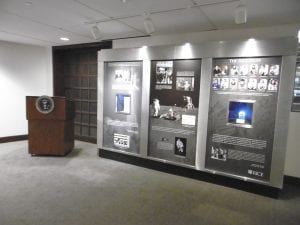
Communicating in English is always challenging for me. I have been to English speaking counties several times but still I feel I need to practice more. It is said that there are four main English skills: Listening, Reading, Speaking, and Writing. The most challenging thing for me is listening. I sometimes have difficulty listening to someone’s words and following the meaning of what they are saying. Especially, when the speakers talk fast and use words I do not know, I cannot catch the meaning. In addition, it still takes some time to process English as I’m translating from Japanese in my head. Therefore, I tend to miss the next sentence or forget the previous content. This typically happens when I am in a lecture, I try to understand the contents, however, this sometimes consumes the chance to catch the next information. I believe I need more training to be able to catch the words and process the meaning more rapidly.
When it comes to research, it is really challenging to me to understand the analytical approximation used in the statistics. I think this is the first time to learn something technical or discuss specific research solutions in English. My mentor taught me about the technique several times, however, I cannot understand it. I think this is because I am not familiar with the technical terms and the special kind of English words used in statistics. I did not know how they express the method and this make it difficult to understand it. Moreover, I had some difficulties in conveying my idea to my mentors. Since I proposed my research project by myself, I needed to explain it to my supporters. At first, I struggled to do this because I was not sure how to convey my ideas in understandable English. I looked vocabulary up dictionary and summarized the main points in my notebook. This really helped me to explain my research to professors and mentors. I am sure this will be helpful in preparation for my poster and explaining my ideas at the poster session as well.

My rewarding experience about English is the experience that I can talk about my extracurricular activities to my friends and they really enjoy hearing about it. As I mentioned in previous report and my application essay, I am in the student rocket team at Tohoku University and work on the avionics and management of a hybrid rocket and CanSat. I think I had a great experience and learned many things through this activity and I am proud of being an engineer on this team. I really wanted to share my work with friends at Rice. Therefore, I secretly prepared for it by looking up words and expressions and bringing some pictures. This was helpful, and I could express my passion for this activity to my friends successfully. I really enjoyed it and gained confidence by talking about my activity.
I think looking at the speaker’s PPT and listening to his/her talk in alternate shifts are the technique I use to gain information smoothly. I think you can predict the content and what the speaker will talk about in detail from the information on slides. This will help you better understand the seminar as you can look up the words on the slide. Typically, slides include some keywords and important information and being aware of this help you understand the contents.
In addition, trying to take notes is good. However, I think you should not write down everything he/she says. In my opinion, this make you just focus on writing and you cannot get the real meaning and the core contents of the talk. I learned this from my experience, as I sometimes realized that I could understand or remember nothing about what I learned from the lecture, although I tried to write down every word I could hear. I believe the best way to take notes is to write down what you understand. This does not have to be English, it can be in Japanese or a drawing and sketch as long as you can understand it. This can be effective when you try to remember that lecture, understand the contents and make it food for thought.
Reflections on Seminar Activities & Other Activities in Houston
I really enjoyed the webinar with Ms. Jen Topp of Lehigh University about the career decision making. I had previously heard about an elevator pitch, but I had never made one and tried to use it before. Therefore, this webinar was good opportunity to consider and design my own elevator pitch. I think my strength is the passion for the space technology and the experience of student rocket team and CanSat team.
I also learned about the importance of following up. I had some opportunities to meet people who work in aerospace field before. However, I think I did not fully make the most of this opportunity by following up later. Therefore, I have set my mind on doing this in the future. As I described in the my week 3 report, I got a chance to interview Dr. Alexander but I did not send a follow-up/thank-you email. I sent it after this seminar.
Research Project Update
During this week, I worked on the analytical approximation of the expected value and variance of truss structures. In my project, analytical approximation is used to ensure the reliability of my simulation method. I use a probability density function to the distribution of deflection, then calculate the mean and variance to assess the performance and reliability considering a certain error in each element. However, you need to assess the reliability for this simulation to be used as a one of the ways to consider the performance of truss. Therefore, I am working on analytical approximation.
I calculated the expected value and variance by using mean and variance of diameter and Young’s modulus. The formula of deflection is a two variables function. I approximated the function using Taylor series expansion. Then, I put this into the calculation of expected value and variance. This is really complicated, and I was not sure the calculation method for this at first. I need to do some complicated derivative calculation and substitution. This was tough.
I also faced a big problem this week. The expected value from analytical approximation matched that of probability distribution. However, the variance did not match in -10 squares order. This is strange, and I could not find out why this happens. There are three possibilities. First, the calculation of variance might have an error. Second, there might be an error in MATLAB code. Third, analytical approximation might be accurate, and this result might indicate that this simulation method is inappropriate. I am still struggling with determining what is the cause of this strange result. I believe the first and second cause candidate can be eliminated by careful calculation and re-examination. Also, I asked my mentor about this problem and we are thinking together. She also helped me to re-check the MATLAB code and re-program it. I am planning to continue to work on this in order to make sure the reliability of simulation.
Moreover, I was also working on the draft poster. I would like to make a well-organized, understandable, and fascinating poster. Also, I want to make it as a way to propose and consider both the manufacturing effort and performance of products. I believe this perspective is important in all kinds of industry and crucial to the further development of space development. National space agencies and many other private sectors all over the world are trying to make a successful development, exploration and business using space environment. I am sure this movement will surely bring a communization of space usage. And I believe developing a rocket or spaceship which is high cost performance is crucial so my project is based on this idea. I hope my idea will be conveyed though the poster and my poster presentation.
Week 05: Final Week at Rice and Research in the U.S. vs. Research in Japan
Final Week at Rice University
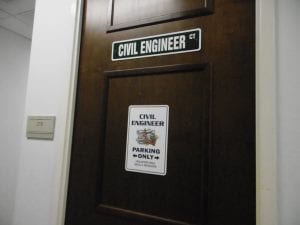
My final week in the lab was so busy working on my poster and final analysis. First, I made a three column layout for my poster and put everything in it. I thought this was the best solution for a layout because everything is equally distributed and well organized. However, this layout forced me to divide my formulas into multiple lines; making them seem more complex and difficult to read. Also, Sarah pointed out the relationship between truss diagram and the histogram was unclear. Therefore, I decided to change the layout of the poster to a horizontal design. This was tough because I needed to calculate the space and size of the object again and re-construct the text. However, this change worked really well and I think my poster became more understandable and well organized.
During the final week, we were still working on the analysis of the variance. It was not good. We were working hard to solve this weird problem. We suspected it was an error in the MATLAB code. So, I changed some parameters to identify what the problem is. However, we could not find the reason and our analytical variance and simulation variance is not in good agreement. I felt some disappointment because I could not fully satisfy the analysis. I hope I can work on this and solve this.
Surprisingly, I encountered big problem the day of the submission of final version of poster. My mentor pointed out there was something wrong with the result. My result did not meet with that of my mentors. We carefully tried to identify what is wrong. We calculated the formula again and carefully reviewed the MATLAB code. I finally found the mistake in code. I misunderstood the radius and diameter! This was a really tiny mistake, and this could have been avoided. It took almost one hour and half to solve this problem and I think we wasted time and consumed our energy because the deadline was really close. I realized I should be very careful and cautious when programing and I need to check my code over and over again to make sure everything is correct.
Research Expectations vs. Reality (Research in the U.S. vs. Japan)
At first, I expected to be informed about what should I do as a research student when I first came to Prof. Spanos’s lab. However, I was just given a desk and chair in my mentors’ room and they did not provide me specific instructions for my project. I was really frustrated at first and worried about the direction of my project. I was really struggling to find out about my research topic and had some difficult times during the first week.
After talking with Prof. Kono, I was about to think about how I could propose my idea and managed to successfully conduct my research project. This was a big difference between my expectations and the reality of being treated more like a graduate student researcher in the U.S. I believe that by defining my own research question I gained an important ability that will be useful as I conduct research in the future. Therefore, this it might be helpful to learn about this difference in approach when doing research in this lab.
My lab culture is really loose, and students are expected to study on their own. Our professor does not always tell students exactly what they should do. Besides, the students are motivated to try to learn by themselves. Of course, he answers student’s question when they ask, but it seems to me that he encourages students to learn more on their own. I think my lab is really individualistic. Also, my lab is not as social as some other labs. By this I mean, I did not have as many chances to do something with my mentors or other lab members outside of working on my research project. While I shared my office with Hanshu, my mentor, he also still has many classes he should attend and he likes to take a nap after lunch. Therefore, usually he is not in office from 11:00a.m. to 3:30 p.m and I often worked on my project alone But this does not mean that I was neglected. I got a lot of support from my mentors and I had a chance to interact with many students and faculty within the Department of Civil Engineering who were near my office and I really enjoyed talking with them.
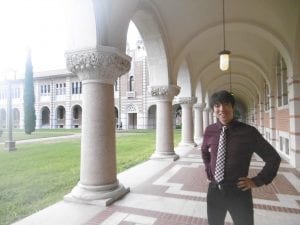
I believe my research experience in Rice was really impressive. I studied about truss structures that can be used in the Space Station through this experience even though I have not yet learned Structural Mechanics at my home university. This was a good opportunity to learn the basis of structural mechanics before I take this course. Also, this was the first time to gain hands-on experience using MATLAB. Although, I had previously learned a MATLAB compatible language at Tohoku University and had experience of C/C++ Microcontroller programing, using MATLAB was little bit challenging for me. What I struggled with is the method to treat differentials and I spent a lot of time on this. Finally, I realized that there is some error in formula expression and could not find the error. I asked my mentors to help me and we worked on it for about an hour. When we solved the problem, we were so delighted! I believe gaining experience with MATLAB will be really helpful in my future studies. I think MATLAB is an essential tool in mechanical engineering because this is often used in calculations of dynamic system. I also just learned that the lab I want to join in Tohoku University uses MATLAB for their main research tool. Therefore, I might be able to take advantage of my experience at Rice to help me work with this lab in Japan.
In addition, I learned more about the Monte Carlo Method. I knew that it is a kind of simulation method which used random numbers. I learned the simulation method and analytical method through this experience. I did not know that you should combine analytical approximations with simulation before. I think I could learn how actual simulations are typically carried out. I am sure that simulation is needed in every field of engineering, including aerospace, and I learned the basic concept of it.
I believe this research experience influenced my thoughts too. Before I participated in this program, I knew that studying and conducting research in other countries might be effective for my future career goals. After this research experience, this idea became clearer and I began to think about the actual possibility that I will decide to go to graduate school in the United States. I cannot say for sure that studying in the United States is the best at this point, but I believe this experience definitely motivated me. I decided to consider more about this option and try to collect information about this.
Also, I came to think about the differences of working in academia and in industry. I thought that academia is the best pathway for my future career as aerospace engineer. However, I realized that working in industry might be a good way to consider the actual development, manufacturing, and operations of the aerospace industry. This might be because my host lab was mainly working on the basis of dynamics and the atmosphere was loose compared to that of some companies. I plan to consider the possibility of working in some company as one of my future options.
I believe I need to be prepared for every possibility of choice for my graduate school. Every option needs careful information and a certain skill, and I need to be flexible and capable enough to be ready to select any option. This includes determining my specific research interest, identifying a certain skill to research, developing technology, and acquiring English skills so I can discuss research related topics and living in other countries. For now, I think I should collect information for specific programs in other universities and learn the basis of engineering and English. I re-confirmed that I should push myself to learn these.
Other Activities I Participated in at Rice University
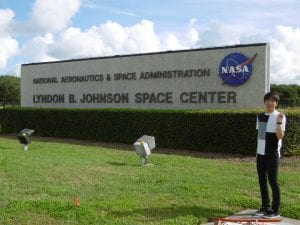
During my time at Rice, I also had a chance to attend a Professional Master’s Seminar. This is a course which was directed by Prof. David Alexander, the director of the Rice Space Institute. The topic of the seminar was about the space study at NASA. Different researchers and engineers at NASA come to Rice and give presentations about the specific development of NASA’s research. It was really impressive and meaningful because I learned a lot about current NASA activities and the skills, mind-set, or methods for space development used in NASA. This seminar is open throughout fall semester and there were many interesting topics and I feel sad that I could not stay for the full semester and join more of these lectures.
I think I really enjoyed meeting with professors and students at Rice. Working in Prof. Spanos lab was good, and I learned a lot about computational dynamics and the method of research in this field. Prof. Spanos kindly offered to keep in touch with me and it will be helpful to maintain a strong connection with him. For now, he is the only person I know with expertise about safety assessments and uncertainty quantifications in my field. In addition, my connection with my mentors were meaningful because I could build a good relationship with them. I am sure that they will become good engineers or researchers in the future and I hope I can meet with them in a conference and stimulate each other.
Meeting with Prof. Alexander was especially impressive. It was a short time, but through this meeting I was able to learn more about the current space development. I think he knows a lot about the NASA’s work and space study at Rice. And Sarah told me that he knows a lot about the graduate programs for space engineering in the United States. This is definitely meaningful for me to think about my future direction. I hope to also maintain a relationship with him.
Research Project Overview and Poster
Poster Presentation at Rice University

At first, I was really nervous about the poster session as I am not confident about my presentation skills. and I could not predict what kind of people would come. However, I thought I could do nothing about this and I just had to practice some and try to relax.
The first person who came to my presentation was Prof. Takayama! I was really upset because I did not expect that, and I was not ready to have a judge yet. However, after the presentation, I felt that I did better that what I had expected. This was something like a detonator to present my ideas with confident. I came across some people form civil engineering and they asked some technical questions for my project. I was a little upset because they asked me deep questions about my project and I was at a loss to describe the answers with the correct words in that moment. However, I think I could overcome this challenge and also, I learned new things about simulation and analysis from these questions.
I really enjoyed poster session because I did my best and learned how to describe my ideas and research in various stages. Before this program, I did not know about the elevator pitch and staged structure to explain research for interdisciplinary audiences. Now, I am sure that I could develop and practice these kinds of skills. Also, I felt really happy about the moment my audience expressed interest and coolness about my study. Some people said, “This is awesome!” “You found an interesting topic”. I was very excited about sharing my ideas for future space station truss applications and I felt that this is the enjoyable moment of poster presentation.
Final Research Project Overview
Research Host: Prof. Pol Spanos, Depts. of Mechanical & Civil Engineering and Materials Science & NanoEngineering
Mentors: Ying Zhang and Hanshu Zhang
Research Project Poster (PDF): “Method for Multi-Error Analysis and Simulation of Future Space Station Truss Application”
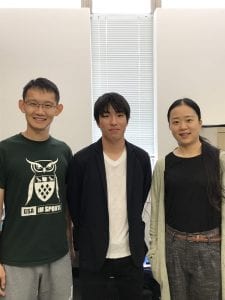
My research focused on the assessment of performance and reliability of three types of truss structure that contains slight difference in rigidity from manufacturing error. This research is highly motivated by the rise of private sector in aerospace field. I believe making product with low effort is crucial for success of business, but we have to ensure the safety and reliability as well. My research is trying to propose the way to evaluate these multi factors and encourage the movement of development of space technology.
To do this, I calculated the deflection of entire truss with random change in rigidity. This change is intended to model the manufacturing error. I used Monte Carlo Method and this process was repeated for 10 thousand times and I calculate the mean and variance of it. In addition, I calculated analytical mean and variance. The reason why we did both is that simulation is helpful to make sure the analysis is reliable and accurate.
The result shows that Howe truss has relatively small mean and variance. This indicates that Howe truss can bear the load better that other structure. And the variance is also small compared to others. This means that Howe truss is more tolerant to manufacturing error.
For future work, we plan to continue to work on the simulation and analysis to model various type of structure and manufacturing error. Also, there might be several ways to evaluate safety vs low manufacturing effort, so we might work on other method. Moreover, I believe this perspective is really important in every engineering products, so I would like to propose my idea to many engineers.
Week 06: Last Week in the U.S.
Sightseeing in Philadelphia
On Sunday morning, we visited Independence Hall in Philadelphia and had a chance to see an actual printed copy of Declaration of Independence for the first time. Although I had not previously learned a lot about the history of the United States of America, I did know about this document. So, this was interesting to me. In addition, the building was impressive and beautiful! I was moved by the fact that the basis of early United States was discussed here and this place was the center of government at that time.
After that, I visited the Independence Seaport Museum. This was interesting to me because I had not learned before about the history of U.S. Navy and its relations to American history. Also, I had a chance to look around the battleship Olympia, which is from World WarⅠand the submarine Becuna, which is from World War II. This was impressive because I liked to see these machines. I also visited the Franklin Institute Science Museum. This was impressive too because I learned some new things about anatomy and I had a chance to see the valuable exhibits of machines and technology.
Clifton Strengths Workshop at Lehigh University
When we arrived at Lehigh University on Monday, we had a workshop to discuss and learn more about our Clifton Strengths results. I agreed with the finding that I am a Deliberative person. I know I tend to be cautious in any situations and sometimes hate unknown challenges and try to avoid risks. I also acknowledged that I place a high value on Discipline. Therefore, I like defined processes, detailed order, and having a well-organized plan for everything. Also, I know that I value having recognition of myself by others. I believe I often bear in mind that I want to be valued in society, but I rarely express this idea to others. I think I was able to detects this aspect of my personality as one of the my strengths and I can utilize this knowledge in my career. However, I still cannot think of the method to make the most of this feature. I need to consider this more.
It was surprising to me that Harmony was also one of my strengths. That is because I think sometimes I tend to be introspective and dislike friction with others. This means I occasionally became unsocial. However, after reading the description of Harmony it helped me understand why this can be regarded as a strength. Its real meaning is that I look for areas of agreement and avoid conflict with others. Truthfully, I really try to do this. I believe I found out new things about myself through this assessment. I would like to utilize this as food for thought for career path.
Other Sessions at Lehigh University
At Lehigh University, I also had a good time at the Faculty Lunch with Prof. Joachim Grenestedt. He is an expert in materials and structural dynamics for vehicles. We talked about his research and I found it interesting because he focuses on the actual utilization and development of vehicles. Also, I had a chance to talk to Prof. Brian Davison who is an expert in Information Technology. I am familiar with programing and electrical circuit. I learned new things about software development through talking with him.
The seminar about entrepreneurship with Lisa Getzler of Lehigh’s Baker Institute for Entrepreneurship, Innovation, and Creativity was very interesting too. Since I have not had a chance to learn about entrepreneurship and its skills before, I learned many things from this experience. For example, I did not know the word “boot strapping” and its meaning which is to push yourself to fulfill your goal without help from others. I believe these kind of skills will be needed not only in entrepreneurship but also in research because you need patience and persistence to conduct research and learn new things. I would like to bear this knowledge in my mind to utilize it in the future.

Program in Washington, DC
The Library of Congress tour was very impressive! This was the most beautiful library I have ever visited. I was really impressed by its architecture. It was really beautiful, spectacular, and magnificent. Every part of building was so well designed and made with great attention to detail. Moreover, the murals and sculptures all tell a story and these are organized in corridors and rooms around a certain theme. This really impressed me. After this visit, I was able to get my own library card and entered inside the main reading room. I was taken in by its spectacular atmosphere and I felt like I was in a place of great art.
The seminars at the Japan Society for the Promotion of Science (JSPS) and National Science Foundation Office of International Science and Engineering (NSF-OISE) were also helpful for me. Actually, I have not had the chance to learn about research grants before this. I did know the names of these organization, but this was the first time to learn about the system of how the research grant funding works and how researchers get money from national organizations. I am sure that this knowledge is definitely important for conducting research and this was a good opportunity to learn about these facts for the first time.
The visit to American Association for the Advancement of Science (AAAS) and talk by Mr. Kei Koisumi was also interesting to me. I learned about the basic system of how policy and science are related. I am sure that this is crucial to utilize the science and engineering for practical use in society. In addition, I was surprised to learn that there is no science director in current president’s White House Office of Science & Technology Policy. I wonder is this situation is really good for future society of United States.
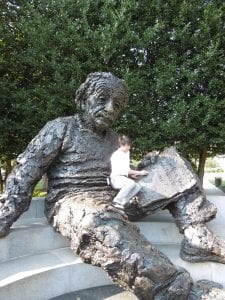
During my free time, I visited the National Air and Space Museum three times and devoted a lot of time to looking around the exhibits. This is because the museum is huge and I did not have a enough time to see everything at once. I saw many milestones of aerospace engineering such as the actual command module of Apollo which returned from the Moon. Visiting here was one of the things on my bucket list, so I was glad to fulfill it.
Also, I got a chance to talk in a one-on-one meeting with Mr. Isao Kotani who is working in JAXA’s Washington DC office. We talked about the space gateway which is the current plan for the next space station project and I learned many things about what NASA and JAXA are discussing for this. Also, he kindly shared with me his own career path in JAXA and his suggestions for my own career path too.
I felt like a little bit tired when I was leaving the United States because I was busy for the past six weeks with research and activities. However, I believe all of the experiences in this program are valuable for my future. Now, I believe I have completed what I should do in the United States and my next stage is at my home university. Therefore, I will do my best for my next goals here.
Final Report
I believe the most important thing is the knowledge I learned and the experience I gained dealing with the frustrations that I experienced when conducting research and living in the U.S. I also learned some new things from this research experience. For example, I learned the Monte Carlo simulation, MATLAB, analytical approximation method, and methods to present my research using a poster. Some of these were a little bit difficult for me because I had never faced these challenges before in my home university. I am sure that I gained some knowledge which will be utilized in my future research and career.
During my research experience, I confronted some frustrations. The first one was how to determine my research goal and how to define the direction to fulfill that goal. As you might know, I expected that my host lab would give me some instruction for this. Actually, this did not happen. Therefore, I really struggled to find these out by myself. Also, I struggled with analysis and fought with the long formulas and MATLAB code for a long time. However, these experiences were really impressive for me. This is because I think I managed to find my research topic after a manner and I experienced one of the most difficult and crucial things in research, dealing with frustrattions. I believe these challenges are unavoidable and these are the real nature of research. These experiences are definitely gave me some food for thought.
I think experiencing these in the early stage of your undergraduate program is helpful in order to think about your future research. You might be able to gain some insight about your interests and hints to prepare for that. I think this experience is helpful to consider your career plans as well because you can learn a little bit more about life of research.
Speaking with my family and professors, the important thing of Nakatani RIES was the connection with people who helped me to conduct research and who gave me some insight about my future career. Prof. Spanos and my mentors, Ying Zhang and Hanshu Zhang, gave me a chance to do research and gave me a lot of helpful advice and offered to remain in contact with me. I hope this connection will be helpful in my future research and career development.
Meeting with Prof. Alexander at the Rice Space Institute and Kotani-san at the JAXA DC Office was really impressive. Although it was a short time, I learned many things such as how NASA and JAXA work and about the career path of engineers in NASA and JAXA. This opportunity gave me some information about the possible direction of the future space development and careers at these national aerospace agencies. I am sure that this experience gave me some insight for my career and this connection will be helpful in that I can talk to someone who has a relationship with NASA and JAXA in the future.
When speaking to an employer, I believe I learned some introductory knowledge about how to conduct research in the United States. I still need to learn many things about engineering and get more experience of research or working on engineering projects. However, I believe the experience of the Nakatani RIES Fellowship definitely showed me the path to be a global engineer and what I should do to be able to work on engineering with people from other culture and think globally.
I think there is no particular thing that I will do differently as a result of participation of Nakatani RIES Fellowship. This does not mean this experience has no effect on myself. I am sure this experience gave me a hint to make a course correction. I had already been thinking about PhD programs in the United States and the way to research or work in the United States since I was in high school. This idea has not changed after this program. I think this program definitely gave me a lot of food for thought for my career development. I learned how what doing research in the United States is like from my own first-hand experience. I felt the actual atmosphere of graduate school at Rice University. And I re-considered the option to go to graduate school in the United States throughout this program. I am sure that the actual experience and the information that I gained from this program will be a valuable thing for my future life and this will make difference between what I knew from before, to after, this program.
- My favorite experience in the United States outside the research was … walking around Ryon Engineering Laboratory, where my office was located. My research focused on computational dynamics. Therefore, I always fought with my computer for a long time. I got tired many times and sometimes just wanted to get away from my computer and walk around my lab. My lab building has a big open ceiling space for big research and educational equipment for mechanical, civil and environmental engineering and I liked to see these. Also, I walked around the building with no purpose. I just took a walk to refresh my brain.
- Before I left for the United States, I wish I had … had more information about what I will do for my research project. As I stated the previous report, my lab did not provide me any information about what I would do and hadn’t prepared a detailed project for me in advance. Therefore, I had some difficulty with my project in the first week because they did not give me a lot of instruction and I needed to find out research topic by myself. I know this is the essence of doing real research. However, this is still difficult for an undergraduate student. Although I managed to conduct my research, I feel that my research is not so sophisticated and I lacked some of the background knowledge and consideration. It might be better if I had gotten some instruction for my research project in advance or been asked to think of my own topic in advance, so that I could think about it before coming to the United States.
- While I was in the United States, I wish I had … more time to talk with my host professor. I know he is busy, but I think I did not have much time to communicate with him. I wanted to hear about his past work which has connections with aerospace engineering and other studies which uses Monte Carlo Method in order to learn more application of this method.
I think I can share my experience with my friends who are interested in research or studying abroad as a follow-on project. I think those students are eager to seek a chance to learn about research opportunities in other countries and to experience student life. I am sure sharing my ideas and experience about the Nakatani RIES program might be helpful to encourage them to challenge this program.
I thank Prof. Spanos, Ying Zhang and Hanshu Zhang for research mentorship, Sarah Phillips, Aki Shimada, Prof. Kono at Rice University and Kenji Ogawa of Nakatani Foundation for your support. And to JP Fellows and US Fellows who shared our time in this program, I thank you for being my friend.
I believe this program gave me a valuable experience of conducting research in the United States and learning about the STEM research environment. I gained a lot of food for thought for my future path, academic goals, and future career design. Moreover, I made connections with students who have a wonderful ideas for their own research and future career goals and I was highly stimulated by them. In addition, I made connections with people who gave me advice and information about my own research and career path. I am sure this program definitely influenced my life and am grateful for this.
Tips for Future Participants
If I could give any advice to future participants of the Nakatani RIES Fellowship, I would say that you should be active about the learning opportunities that are available in this program. I believe this program will provide you the experience, information, and connections which could be helpful in your research and career development. All you have to do is to acquire these factors and bear in mind to use them for you.
Pre-Departure Tips
- You should plan to bring a bring laptop for research but I also I recommend you bring a USB device as well. This is to share research files with your mentors or professor. And for those who will do computational research, please be sure to back up your data frequently and manage the versions of your program code or output data. I recommend you use OneDrive if you are a Windows User. OneDrive enables you to restore the past version of your file. Actually, I mistakenly overwrote a MATLAB code to a different code and need to restore this from OneDrive.
- You might also want to bring some books from Japan. I strongly recommend you do so, however, be sure to check if you really need the book. I brought a MATLAB book, and this was helpful. I also brought a dynamics textbook; however, I did not use it at all and this was just dead weight in my luggage.
- You can also access books in the Fondren Library or ask to borrow textbooks related to your project from your professors or mentors, although these will be in English.
Luggage/Packing Tips
- I also recommend you mail your books, the documents you got from activities at Rice, and souvenirs to bring back Japan from the Rice University Post Office before traveling to East Coast. These might be heavy, and you might not want to bring these with you all the time in on the East Coast. I used Priority Mail International because the Flat Rate box was small. You can get a box at Rice University’s Post Office. They offer several types of boxes for free.
Tips on Communicating in English
- When it comes to speaking, I think you do not have to do anything special for this. You should do what you are doing as an English learning. I am sure future participants have some ways to learn English and I think you should proceed with your goals.
Things to do at Rice University
- You should definitely visit the Exhibition about the Moon-shot speech at Fondren Library. You can see a Moon rock there! And there are several things which were used in the International Space Station too. Fondren Library is my favorite spot on campus as it is a beautiful and really quiet place. You can work on your project and rest your brain too. However, it is too cold inside, so please be sure to bring something to endure the cold!
Tips on Doing Research
- For those who will do a computational research project, please be sure to make friends with the computer! If you have a difficulty dealing with your computer, you might face some problems. Ask your host professor or mentor if you will use your laptop computer or another computer in lab. And check if there is any software that you will use in research as well. Rice University offers some software for free to students too (login with Rice NetID/password required).
